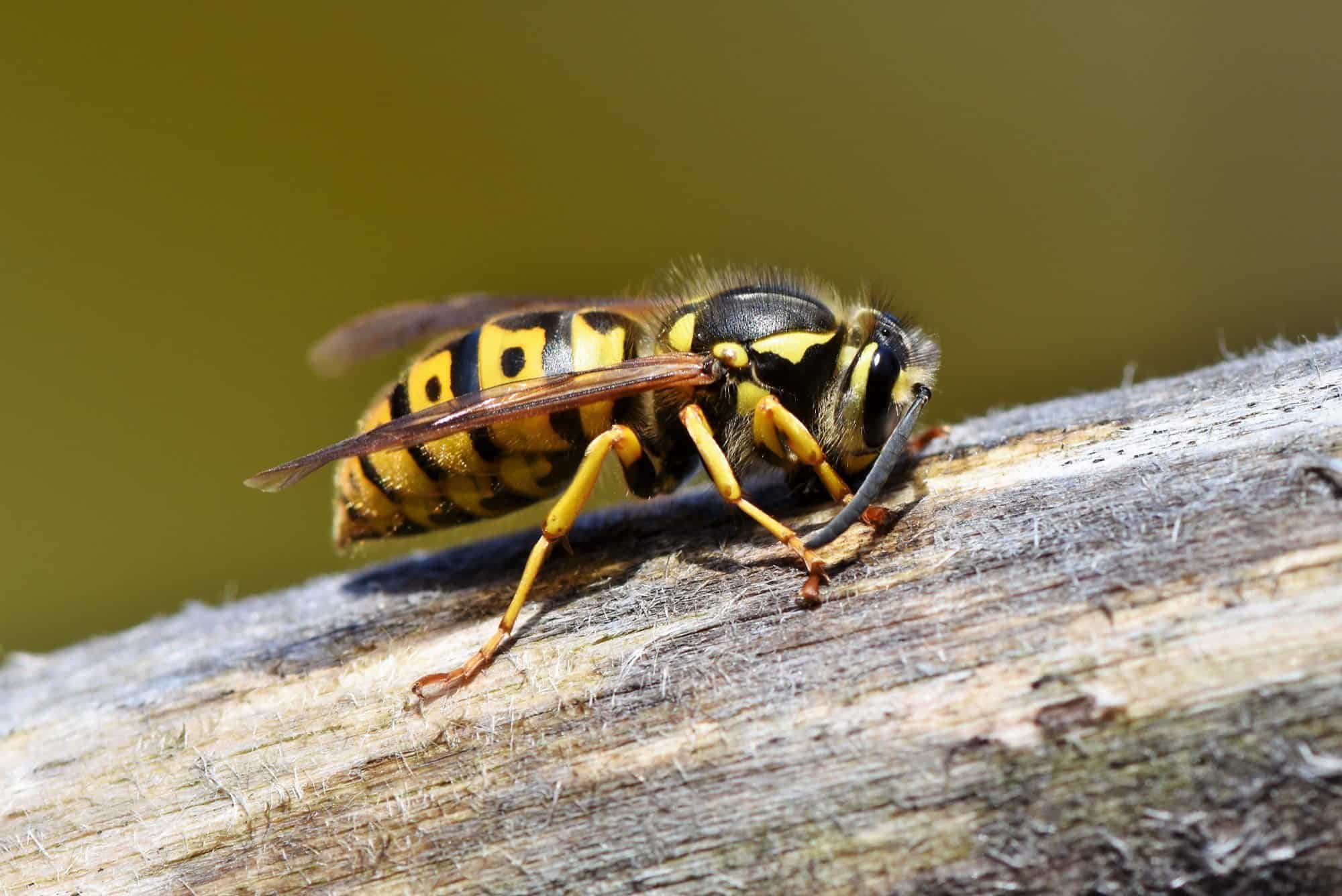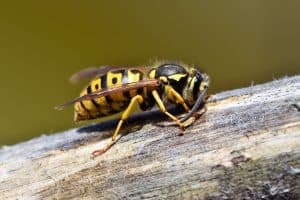What You Should Know About the Summer Wasp Season
- Jul
- 26
- Posted by Darren Duuner
- Posted in Tips & Articles, Wasp or Nest Removal
- off

 Buzz. Buzz. Buzz.
Buzz. Buzz. Buzz.
Is it a bee? A fly? Or… is it a wasp?
If it’s a wasp, watch out! Wasps can sting over and over, unlike their close relative, the bee. However, they are less annoying than your common housefly.
They aren’t particularly interested in you. They’re interested in building a home in or near your home.
Summertime is wasp season. Wasps can scare you on your porch or by the pool. They don’t care about ruining your summer fun.
Their goal is to multiply and find a safe place to live. If you’re constantly running into them on your property, then it’s likely they’ve already found a home nearby.
So, what’s a homeowner to do?
Using the broom approach work. Screaming may scare the neighbors, but wasps won’t be bothered. Lucky for you, there are many ways to rid your property of wasps without embarrassing yourself or getting stung.
To know what actions to take during wasp season, you need to understand more about wasps. Read on to learn more about wasp season and how to keep wasps away.
Summer Fun or Summer Stung?: What You Need to Know about Wasp Season
Did you know that there are 30,000 wasp species in the world?
Wasps have a pointed lower abdomen, unlike their rounded bee relatives. They vary in color and size and only the females can sting.
They are narrow at the waist and build nests out of wood fiber turned into pulp. Always approach a wasp nest with caution. If not, expect a swarm of wasps to confront you about disturbing their peace.
Explore the following information about wasps to learn how to make it through wasp season without a sting.
Why Summertime?
Wasps hide out during the winter. They go into hiding and wait for spring to re-emerge. But, few survive.
When the few surviving queen wasps do re-emerge, they seek out a safe place to nest. These new nests will be the place where they lay their eggs. The eggs and wasps they birth will then become workers.
The worker wasps continuing building and fortifying the nest. They also feed the young wasps by hunting for food.
The queen wasp continues to reproduce. By summer, the wasp colony is at the top of its game. At this time, there can be thousands of wasps in the nest.
Where They Come From
Location, location, location!
Queen wasps don’t choose the location of their nest lightly. Just like a homebuyer, they weigh the pros and cons of each location. They find the safest location away from predators, somewhere abundant with food, and with minimal exposure.
They enjoy places near wooded areas and water sources. These places are full of other small insects to hunt.
They are all about privacy and seclusion. This is why you can find wasp nests high above your home.
Better yet, your home is a prime location for wasps if rotting wood is nearby. For example, fallen trees or an old fence.
They can use these materials to build their nest and expand their population.
Finding the Nest
Wasps are predictable. But, that doesn’t mean finding their nest will be a cinch. There are many places around your home where a wasp will settle down.
Common places to look for wasp nests are chimneys, elevated corners, and overhangs. These nests can have many cells, similar to honeycombs. Their nests can also look like straight lines or a paper mache sphere.
If you find a nest, never swat it down. This is sure to ruffle a few wasp wings. It would be very dangerous to you and anyone nearby.
Wasp Diets
Wasps are omnivorous. The larvae eat insects fed to them by the adult workers. The workers then eat a sugary substance created by the larvae.
Adults also eat nectar, fruit, honey, and plants. So, if a wasp is hovering near your dinner, they’re looking for a sweet treat.
When having family cookouts, leave the sweets inside. This will prevent wasps from being attracted to your party. And, it will keep people from getting stung.
Protecting You and Your Home
Does you versus thousands of wasps sound like a fair fight?
We’d go with a strong “no”.
In the summer months, the wasp population is at its peak. So, if you don’t want to be swarmed by potentially thousands of wasps, then walk away. Call a professional pest removal company instead.
Before the summer months, evaluate your home’s exterior. Look for cracks in your home’s exterior or any rotting wood.
To keep wasps from nesting near your home, remove old and rotting wood. This includes old firewood, rotting fences, and siding. Throw out these items and repair exterior areas of your home.
Doing so will keep wasps from entering areas where they can nest and hide. And, it will remove their nest-building materials.
Lastly, keep small insects at bay. Trim your bushes and plants. Ensure that your lawn isn’t collecting moisture where small bugs enjoy hanging out.
What to Do If You Get Stung
Before the summer rolls around, find out if anyone in your family is allergic to bee and wasp stings. If so, have the necessary medication on standby in case they get stung.
For non-allergic individuals, all that is needed is wound care. Clean the wounded area and apply antibiotic ointment. Take an antihistamine for itching and/or a pain reliever.
Call your doctor to see if your tetanus shot is current. Otherwise, you’ll need to get a booster shot.
Preparing for Wasp Season
Get through summer without a sting by preparing for wasp season. Prepare for wasp season by consulting an expert.
Contact a local exterminator to learn more about the wasps in your area.
Determine what their nests look like. And, seek out more information about their behavior.
Remember, never approach a wasp nest. Call a professional or use a long-distance wasp spray. Wasp sprays, however, don’t always work.
So, if you aren’t a fast runner, it’s best to call the pros.
Need a pro to help with wasps on your property? Contact us today to schedule a consultation and wasp removal appointment.



